Nobuo Sekine

Nobuo Sekine
January 11 – February 15, 2014Los Angeles
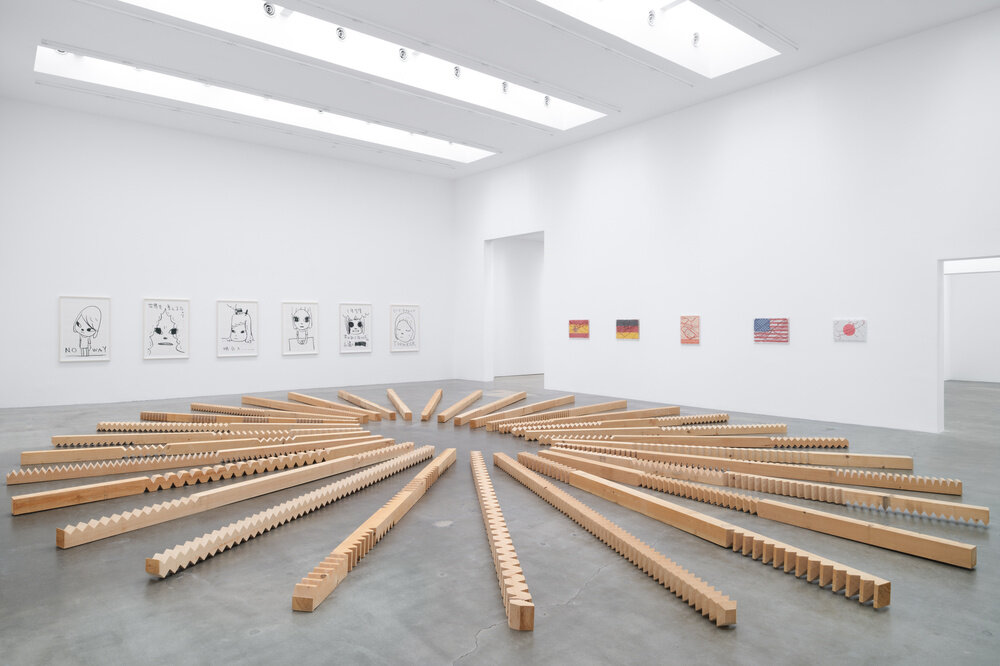
Written with a Splash of Blood
January 13 – March 3, 2024Los Angeles
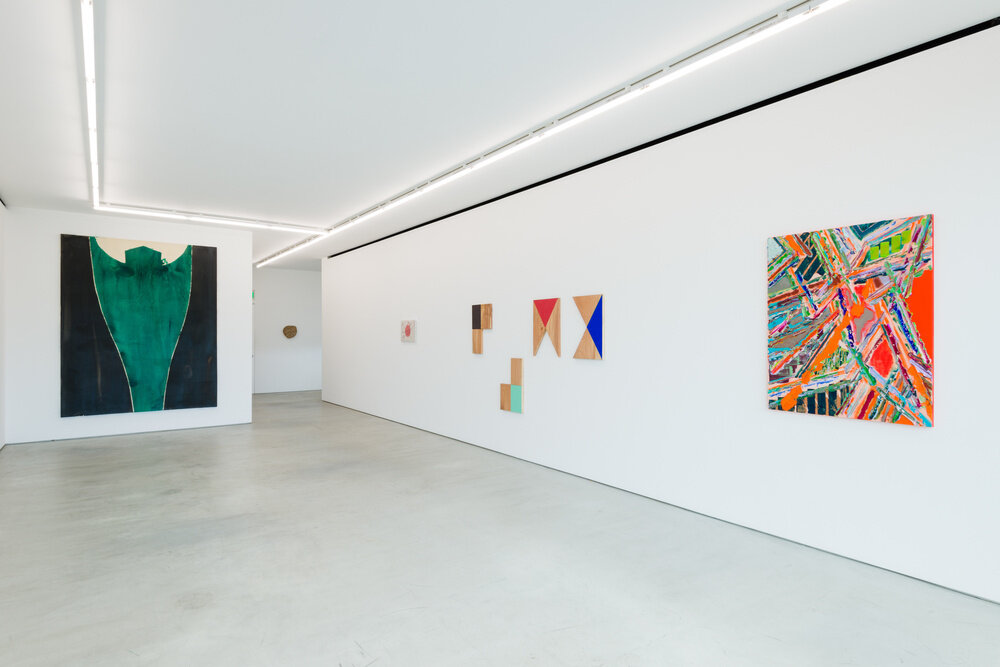
February 20 – March 19, 2021Tokyo
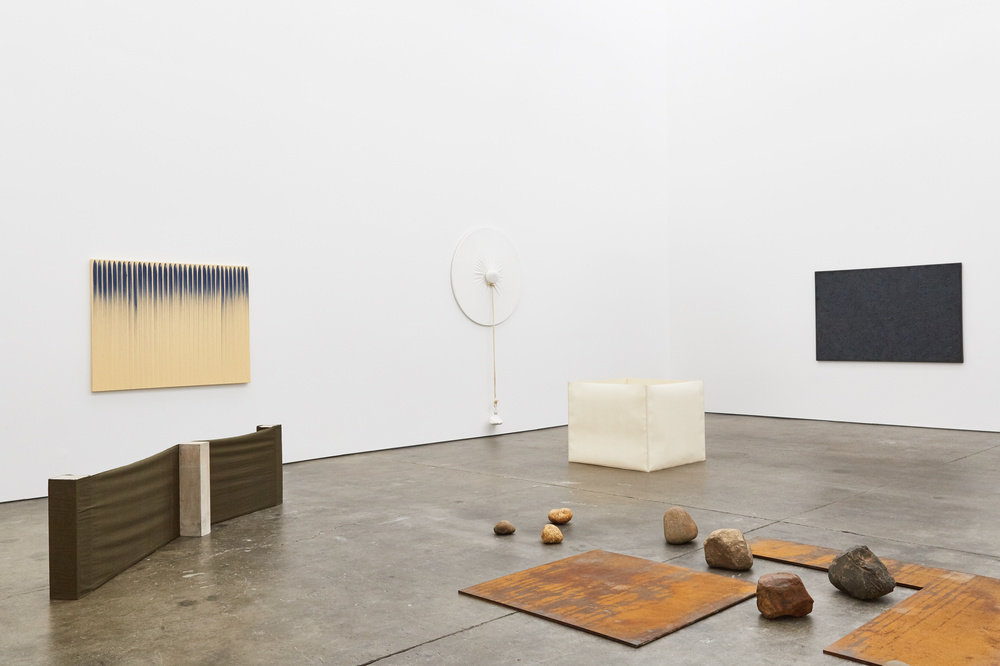
July 7 – September 16, 2017San Francisco

Curated by Mika Yoshitake
February 25 – April 14, 2012Los Angeles
Broadcasts
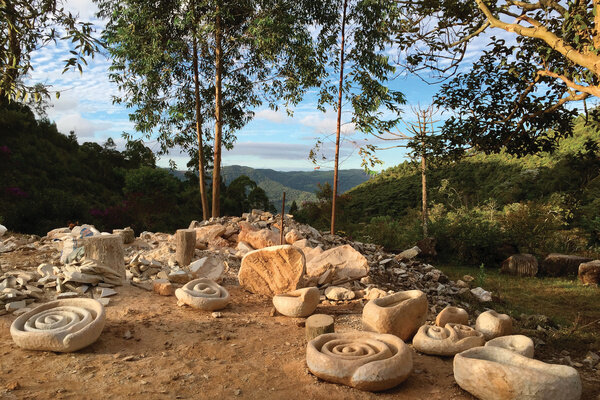
Organized by Naz Cuguoglu
April 2021
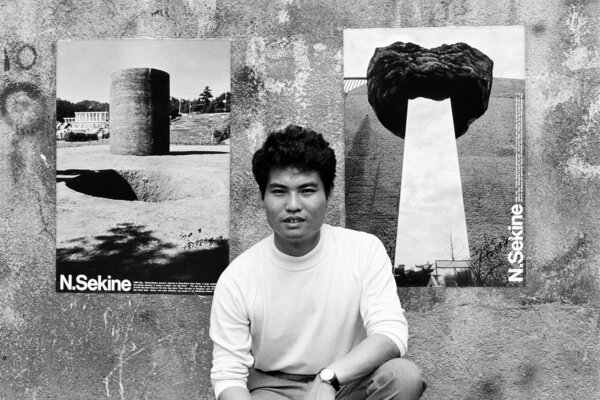
Nobuo Sekine
May 8, 2020
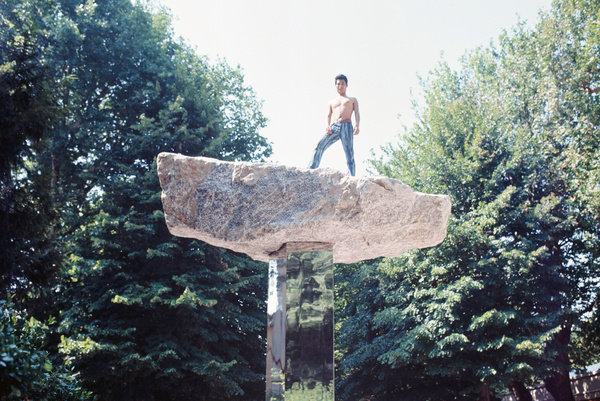
Nobuo Sekine
May 2020
Biography
Nobuo Sekine (b. 1942, Saitama, Japan; d. 2019, Los Angeles, CA) first gained renown for his work in sculpture and installation art in late 1960s and 1970s Japan. After receiving a BFA in oil painting at Tama Art University, Tokyo, Japan in 1968, he began to engage with the concept of the “phase” in topology, a branch of mathematics concerned with abstract space and connectedness—specifically the properties that are preserved under continuous deformations. Through this discipline, Sekine perceives form, matter, and space as infinitely malleable. His early Phase series—made of bent plywood and bright, neon colors—exemplifies these concepts and transforms the viewer’s visual perception. Sekine then made an indelible impact on the course of Japanese art history at the end of 1968, when he exhibited Phase—Mother Earth at the 1st Contemporary Sculpture Exhibition at the Suma Rikyū Park in Kobe, Japan. This iconic work, which consisted of a cylindrical hole in the ground, seven feet wide and nine feet deep, accompanied by an adjacent cylindrical tower of earth molded into exactly the same dimensions, inspired artist-theorist Lee Ufan to develop new theories of phenomenology in a contemporary Japanese context. These theories provided a conceptual framework within which to understand the work of several artists working in the similarly ephemeral, site-specific modes, such as Susumu Koshimizu and Kishio Suga—who along with Sekine and Lee came to be referred to as Mono-ha (“school of things”). Later in the 1970s, Sekine shifted into a more conventional sculptural practice, though one that nevertheless refers to topology. Phase of Nothingness—Black (1977–78) is a series of black FRP sculptures that contrasts the natural and the man-made, ranging from rough, clod-like forms that lie low on the floor to highly polished, geometric shapes that stand tall like totems. Sekine considers their dispersal in an exhibition space to be a “topological scene” governed by aesthetic principles similar to those found in Zen rock gardens—namely, asymmetric arrangements of disparate elements that combine to represent a broader landscape of seas, islands, and mountains. In the 1990s and 2000s, Sekine was commissioned to make public sculptures at sites all over Japan.
Following his participation in the Venice Biennale in 1970, Sekine had solo exhibitions in Genoa, Milan, Copenhagen, Tokyo, and Nagoya. From 1978 to 1979, Phase of Nothingness—Black was the subject of a solo exhibition that toured from the Kunsthalle Düsseldorf, Germany to the Louisiana Museum of Modern Art, Humlebæk, Denmark; Kröller-Müller Museum, Otterlo, Netherlands; and the Henie Onstad Art Centre, Høvikodden, Norway. Recognition in the United States began with his inclusion in Requiem for the Sun: The Art of Mono-ha, curated by Mika Yoshitake and held at Blum & Poe, Los Angeles, CA in 2012. This large-scale survey was the first overview of the movement in North America. Blum & Poe subsequently presented Sekine’s first solo exhibition in Los Angeles in 2014. His work has also been included in important surveys, such as Visual Natures: The Politics and Culture of Environmentalism in the 20th and 21st Centuries, Museum of Art, Architecture and Technology, Lisbon, Portugal (2022); The Time Capsule, Cang Art Museum, Hangzhou, China (2021); To Be Determined, Dallas Museum of Art, Dallas, TX (2020); DECODE: Events & Materials — The Work of Art in the Age of Post-industrial Society, Museum of Modern Art, Saitama, Japan (2019); Minimalism: Space. Light. Object., National Gallery, Singapore (2018); Art and Space, Guggenheim, Bilbao, Spain (2017); Other Primary Structures (Others 2: 1967–1970), Jewish Museum, New York, NY (2014); Prima Materia, Punta della Dogana, Venice, Italy (2013); Parallel Views: Italian and Japanese Art from the 1950s, 60s, and 70s, The Warehouse, Dallas, TX (2013); Tokyo 1955–1970: A New Avant-Garde, Museum of Modern Art, New York, NY (2012); Reconsidering Mono-ha, National Museum of Art, Osaka, Japan (2005); Japanese Art After 1945: Scream Against the Sky, Yokohama Museum of Art, Yokohama, Japan; traveled to Guggenheim Museum SoHo, New York, NY and San Francisco Museum of Modern Art, San Francisco, CA (1994); and Japon des Avant Gardes 1910–1970, Centre Georges Pompidou, Paris, France (1986). His work is represented in numerous institutional collections including Hakone Open-Air Museum, Hakone, Japan; Hara Museum of Contemporary Art, Tokyo, Japan; Hiroshima Contemporary Art Museum, Hiroshima, Japan; Long Museum, Shanghai, China; Louisiana Museum, Humlebaek, Denmark; National Museum of Art, Osaka, Japan; Pinault Collection, Venice, Italy; Rachofsky Collection, Dallas, TX; Setagaya Art Museum, Tokyo, Japan; and Takamatsu City Museum of Art, Takamatsu, Japan, among many others.
Selected Works
News
Mousse Magazine: Nobuo Sekine – A Telepathic Understanding of Form
10/01/2019
Remembering Nobuo Sekine
05/14/2019
Nobuo Sekine | Louisiana Museum of Modern Art, Humlebæk, Denmark
12/06/2016
Kaleidoscope Asia: Mika Yoshitake Looks Back at the Art of Nobuo Sekine
09/01/2015
Sculpture Magazine: Nobuo Sekine at Blum & Poe, Los Angeles
01/01/2015
W Magazine: The Simple Complex
01/16/2014
Related Publications
Requiem for the Sun: The Art of Mono-ha
Mono-ha: School of Things